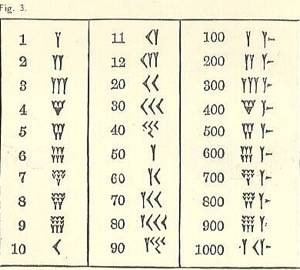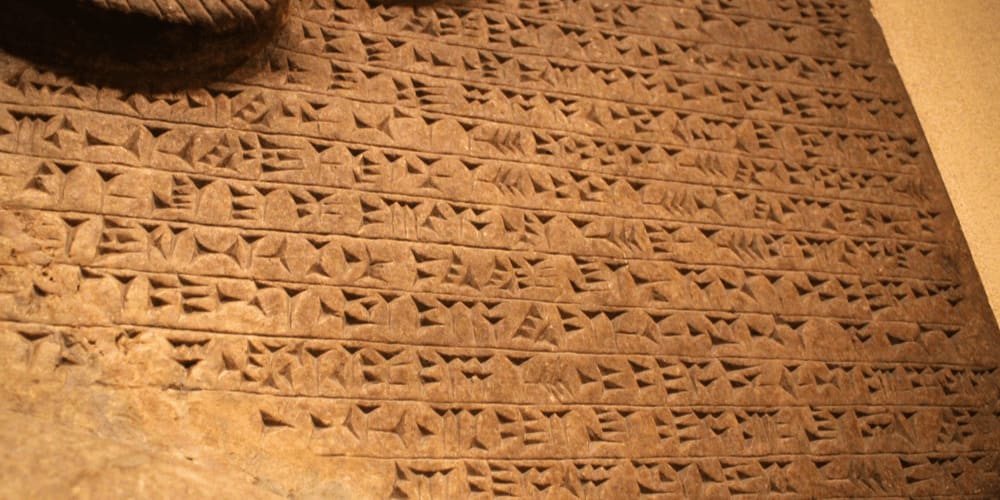
Sumer, a region in Mesopotamia, modern-day Iraq, holds the distinction of being the cradle of civilization, where numerous innovations such as writing, the wheel, agriculture, the arch, plowing, irrigation, and more were pioneered. The Sumerians are credited with developing the world’s earliest known writing system, called cuneiform script, characterized by wedge-shaped characters etched onto baked clay tablets. This has granted us more insight into ancient Sumerian and Babylonian mathematics compared to early Egyptian mathematics. In fact, we possess what appear to be school exercises containing arithmetic and geometric problems from this era.
Similar to Egypt, Sumerian mathematics initially evolved in response to administrative necessities when their civilization settled and embraced agriculture, potentially as early as the 6th millennium BCE. They needed mathematics for tasks like land measurement and taxation. Additionally, the Sumerians and Babylonians encountered the need to describe large numbers as they ventured into mapping the night sky and constructing an advanced lunar calendar.
They were among the first to introduce symbols for groups of objects to facilitate the representation of larger numbers. They transitioned from employing distinct tokens or symbols for things like sheaves of wheat or jars of oil to the more abstract usage of symbols for specific numerical values.
Starting around the 4th millennium BCE, they adopted a system where a small clay cone symbolized one, a clay ball represented ten, and a large cone equated to sixty. As the third millennium progressed, these objects were replaced by cuneiform equivalents, allowing numbers to be written using the same stylus as text. It is believed that a rudimentary form of the abacus was in use in Sumeria as early as 2700-2300 BCE.
Sumerian & Babylonian Number System: Base 60
Sumerian and Babylonian mathematics were grounded in a sexagesimal system, or base 60, which could be conveniently counted using the twelve knuckles on one hand and the five fingers on the other hand. Unlike the numeric systems of the Egyptians, Greeks, and Romans, Babylonian numbers employed a genuine place-value system. In this system, digits positioned in the left column represented more significant values, similar to the modern decimal system, albeit based on 60 instead of 10. For example, in the Babylonian system, a unit symbol represented 3,600, a ten symbol represented 60, and a one symbol represented 1, resulting in the value 3,661.
To represent numbers from 1 to 59 within each place value, two distinct symbols were used: a unit symbol (Babylonian unit) and a ten symbol (Babylonian ten), combined much like the Roman numeral system. For instance, Babylonian unit Babylonian twenty-three represented 60 plus 23, totaling 83. However, both the number 60 and 1 were represented by the same symbol, and due to the absence of a decimal point, the actual place value of a symbol often had to be inferred from the context.
It’s been suggested that Babylonian advancements in mathematics were likely aided by the fact that 60 has numerous divisors (1, 2, 3, 4, 5, 6, 10, 12, 15, 20, 30, and 60). This historical usage of 60 seconds in a minute, 60 minutes in an hour, and 360 (60 x 6) degrees in a circle all stem from the ancient Babylonian system. Similarly, the preference for the number 12 (with factors of 1, 2, 3, 4, and 6) in various historical contexts, such as 12 months, 12 inches, 12 pence, and 2 x 12 hours, can be attributed to its multiple divisibility.
Additionally, the Babylonians introduced another groundbreaking mathematical concept not present in the Egyptian, Greek, or Roman systems: a circular character for zero, although its symbol primarily served as a placeholder rather than a standalone number.
Babylonian Clay tablets
Evidence reveals the development of an intricate metrological system in Sumer around 3000 BCE. From approximately 2600 BCE onwards, Sumerian mathematics expanded to include multiplication and reciprocal (division) tables, tables for squares, square roots, cube roots, geometric exercises, and division problems. Subsequently, Babylonian tablets, dating from about 1800 to 1600 BCE, delved into diverse mathematical topics encompassing fractions, algebra, methods for solving linear, quadratic, and even some cubic equations, as well as the calculation of regular reciprocal pairs (pairs of numbers that multiply together to yield 60). An astonishing achievement was a Babylonian tablet approximating the value of √2 with remarkable precision to five decimal places. Other tablets listed squares of numbers up to 59, cubes of numbers up to 32, and tables related to compound interest. Additionally, one tablet provided an estimate for π, giving it as 3 1⁄8 (3.125), a reasonably close approximation to the actual value of 3.1416.
The concept of square numbers and quadratic equations, involving unknown quantities multiplied by themselves (e.g., x^2), naturally arose in the context of land measurement. Babylonian mathematical tablets offer the earliest evidence of quadratic equation solutions. Babylonian approaches to solving these equations often involved geometric methods, resembling a kind of geometric puzzle of dissecting and reassembling shapes. However, some examples suggest problem-solving for its own sake rather than for resolving specific practical issues.
Geometry played a prominent role in Babylonian architecture, design, and leisure activities, including games like backgammon. Their geometry extended to calculating areas of rectangles, triangles, and trapezoids, as well as determining the volumes of basic shapes like bricks and cylinders (though not pyramids).
Plimpton 322 clay tablet
The renowned and contentious Plimpton 322 clay tablet, believed to originate from around 1800 BCE, hints at the possibility that Babylonians might have possessed knowledge about right-angled triangles, specifically the relationship where the square of the hypotenuse equals the sum of the squares of the other two sides, long before the Greek mathematician Pythagoras. The tablet seems to catalog 15 instances of perfect Pythagorean triangles with whole number sides. However, it’s worth noting that some argue these entries were more likely academic exercises rather than intentional demonstrations of Pythagorean triples.


